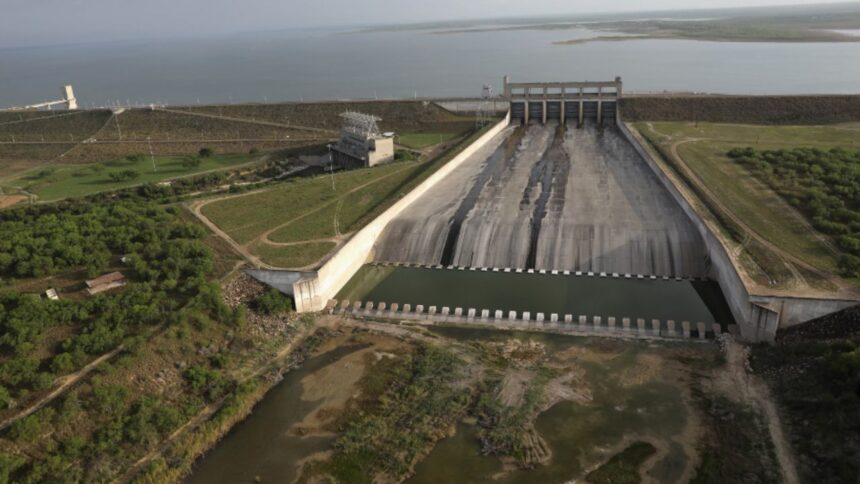Amid an intensifying drought gripping the region, South Texas border officials are urgently seeking information from federal and state authorities about the rapidly diminishing water levels in two critical reservoirs that supply communities along the Rio Grande.
On April 16th, Hidalgo County Judge Richard Cortez submitted formal requests to the Texas Commission on Environmental Quality (TCEQ) and the International Boundary and Water Commission (IBWC) to account for the “missing water” in the Falcon and Amistad reservoirs, which have dropped to alarmingly low levels not seen in decades.
“We are facing a dire situation that threatens the livelihoods and well-being of our residents,” Judge Cortez said in a statement.
It is imperative that we get clear answers and immediate action to address this water crisis before it spirals out of control.
The two reservoirs, which are fed by the Rio Grande and managed by the IBWC, are currently at 21% and 36% of their total capacity, respectively.
These levels are far below historical averages for this time of year and have been steadily declining due to a combination of factors, including:
- Prolonged drought conditions exacerbated by climate change, led to reduced inflows from the Rio Grande and its tributaries
- Increased water demand from a growing population and expanding agricultural activity in the region
- Mexico’s failure to deliver water owed to the U.S. under a 1944 treaty, has further strained the already limited supply
Communities at Risk
The dwindling water reserves have put dozens of communities along the Texas-Mexico border at risk of severe shortages in the coming months.
Cities like Mission have already considered halting new development projects due to concerns about meeting future water demand.
“We’re looking at a very real possibility of taps running dry if we don’t take immediate steps to conserve and secure new water sources,” Said Mission Mayor Armando O’Caña.
“This is a regional crisis that requires a coordinated response from all levels of government.“
Calls for Transparency and Action
Judge Cortez’s request for information is part of a growing chorus of voices demanding greater transparency and decisive action from state and federal officials to address the looming water crisis in South Texas.
“The public deserves to know exactly how much water is available, where it’s going, and what plans are in place to ensure a sustainable supply for the future,” said State Senator Juan “Chuy” Hinojosa, who represents the region.
“We need an all-hands-on-deck approach to tackle this problem before it becomes a full-blown catastrophe.“
The TCEQ and IBWC have not yet responded to Judge Cortez’s request, but the mounting pressure from local officials and residents is expected to prompt a swift response and concrete steps to mitigate the impact of the drought on border communities.
As the situation continues to unfold, all eyes will be on the state and federal agencies tasked with managing the region’s precious water resources and ensuring the health, safety, and prosperity of the millions who call South Texas home.
Check Also: Renowned Texas Transplant Surgeon Under Investigation for Allegedly Manipulating Patient Records





